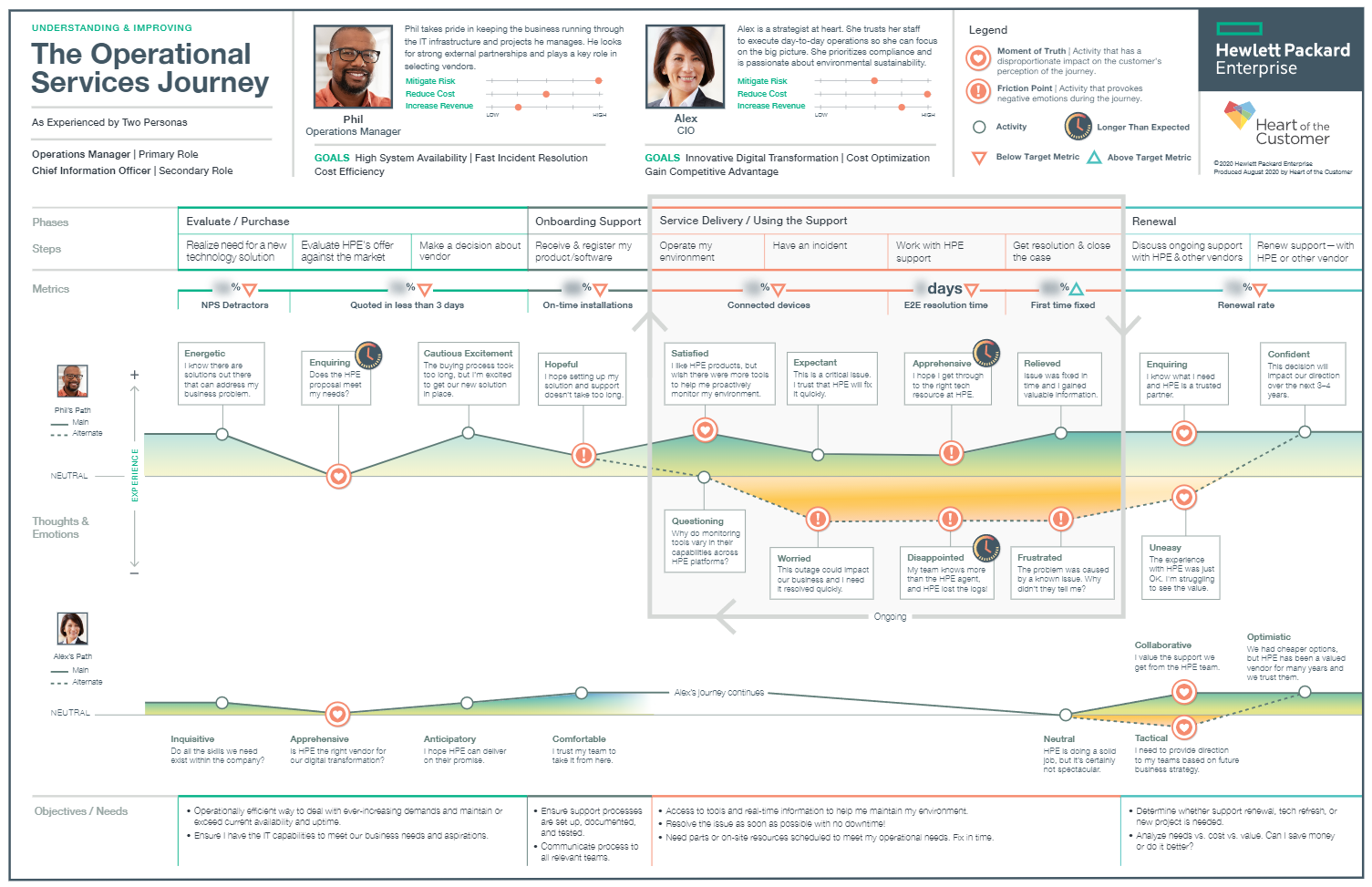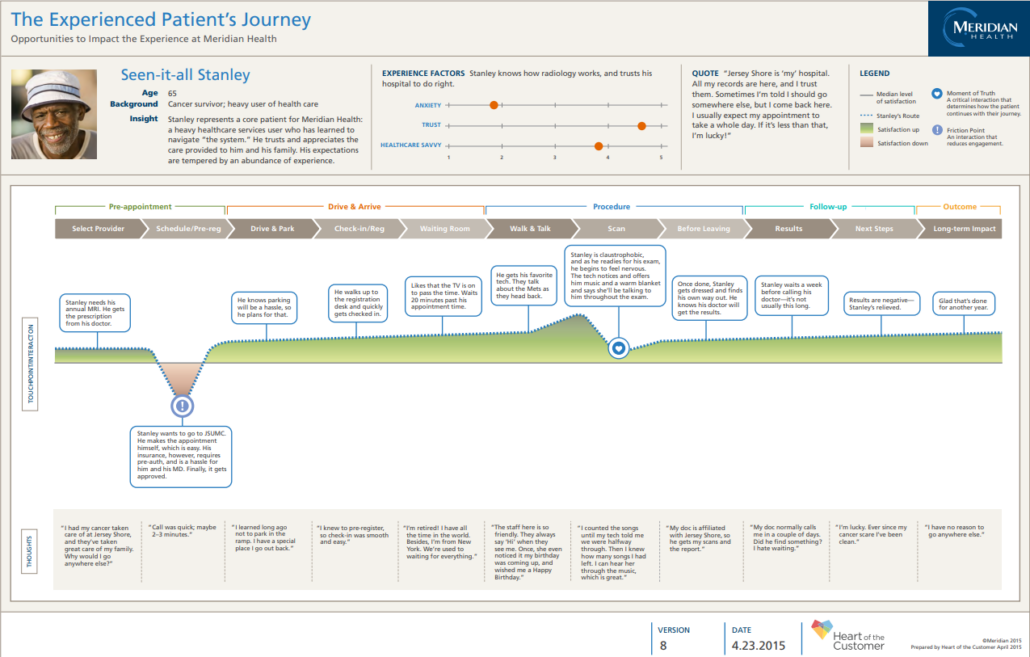
Today’s customers demand more than just effortless experiences – they want engaging and personalized ones that meet their evolving needs. As customer experience (CX) leaders, it’s crucial to prioritize creating experiences that build customer loyalty. This means quickly responding to changing trends, innovating for the future, and building a foundation of tools that allow you to act on customer feedback with confidence. Here are our top tips and practical advice for how to create an experience so unique that your customers won’t be able to get enough of it – and will come running back for more.

In today’s customer-centric era, providing an effortless customer experience has become a crucial aspect of winning customer loyalty. The idea of making things simple and easy for customers has been embraced by many companies, but the question remains: is that the only goal we should aim for? While a smooth experience is undoubtedly important, it’s crucial not to forget about the emotional connection with customers.
A robust and meaningful relationship with customers can significantly impact long-term loyalty and brand advocacy. Therefore, companies should strive to build deep, lasting relationships with their customers by going the extra mile and providing a personalized touch that creates a sense of belonging and loyalty. While the effortless experience is essential, it should not be the only focus in the battle for customer loyalty.

Building an exceptional experience is a key factor in establishing long-lasting relationships with your customers. By providing an outstanding and effortless experience, you decrease customer churn and keep your customers coming back for more. And how can you build an exceptional customer experience? It starts with understanding your customers and identifying their needs and preferences. Once you have with a solid understanding of your customers, you can create personalized experiences that speak to their specific needs.
Leading a customer journey mapping initiative is our recommended approach to this. Through customer journey mapping, you can identify the touchpoints between your brand and customers, determining what they need from each interaction and how to deliver it. Bring a cross-functional team along with you during the journey mapping process. Have teams hypothesize the journey, have individuals join in on customer interviews, and allow them to be a part of designing the future state experience. These simple but effective change management practices lay the groundwork for CX transformation and governance to ensure it comes to life.
Not only does this approach delight customers, but it also establishes trust and customer loyalty, which are vital in maintaining relationships that last. By consistently engaging with your customers and providing unique, tailored experiences, you can differentiate yourself from the competition and build a low effort customer journey that truly sets you apart.

Reducing customer friction is a critical factor in improving customer engagement in today’s business environment. With the advent of technology, customers expect a seamless experience that requires minimal effort. In fact, a study by the Corporate Executive Board (CEB) found that customers who have low-effort experiences are 94% more likely to buy from the same company again.
Therefore, it’s crucial for businesses to understand the importance of reducing customer effort and the positive impact it can have on customer loyalty and retention. Conducting Customer Journey Mapping is a valuable tool to achieve this. By analyzing the customer journey, businesses can identify pain points and eliminate or reduce the effort required to interact with their products or services.
To achieve a frictionless customer experience, it’s important to have a deep understanding of the customer journey. Customer Journey Mapping is a technique used to map out the current state of the customer experience, identify pain points, and start a conversation about where to improve. In our book, How Hard Is It to Be Your Customer? Using Journey Mapping to Drive Customer-Focused Change, we detail the best practices in journey mapping to identify customer pain points and drive improvements. Customer Journey Mapping, done right, not only identifies the friction points to improve, but brings a cross-functional team aligned on the experience and fuels the desire for customer-focused decisions. These efforts help start the motion for a customer-centric culture, with leadership prioritizing an effortless experience and creating loyal customers.

Customer Journey Mapping is a deliberate approach to collecting data on how customers interact with a company, which can then be used to create customer loyalty. The goal of this initiative is to identify the efforts required by a customer at each touchpoint, whether it’s purchasing a product, accessing customer support, or troubleshooting an order issue. By conducting customer interviews, businesses can get a better picture of the customer journey, the what the service expectations of customers are, and where improvements are needed for an effortless experience. Once the efforts are identified, the business can then ideate ways to eliminate or reduce them to make the experience more seamless for the customer.
The benefits of reducing customer effort go beyond increasing customer loyalty and retention. Studies have shown that reducing customer effort can also lead to increased revenue. In a survey by the Temkin Group, 86% of customers who had a high-effort experience said they were less likely to buy from the same company again. This shows that businesses that can reduce customer effort can experience a significant increase in repeat sales.
But reducing customer effort isn’t just about fixing specific touchpoints in the customer journey. It’s about creating a customer-centric culture throughout the organization. This requires a commitment from top-level leadership to listen to customer feedback and make the necessary changes to improve the experience. It also requires a company-wide understanding of the importance of reducing customer effort and the role that each employee plays in achieving a frictionless experience.
Reducing customer effort is crucial in today’s business environment. Customers expect a seamless experience that requires minimal effort, and businesses that can deliver on this expectation will create loyal customers who will keep coming back. Conducting journey mapping and creating a customer-centric culture are all essential in your customer experience strategy. By reducing friction in the customer journey, businesses can increase engagement, loyalty, and revenue.

In driving customer effort improvements, change management is often not taken as a deliberate practice. Discover how our approach, rooted in John Kotter’s acclaimed book Leading Change and Prosci’s influential ADKAR change management framework, can be the catalyst for your customer experience improvement programs. By harnessing the power of change management, you can achieve transformative results in a fraction of the time.

Unlike most CX programs that stumble at the starting line, our proven method connects customer experience to tangible business problems. We tackle customer churn, low share of wallet, and escalating service costs head-on, empowering you to take decisive action that drives real change.
Leadership engagement is the linchpin of success. Through strategic CX Councils comprised of influential organizational leaders, we ensure that your change efforts are championed from the top down. Don’t let lackluster progress derail your program – secure active involvement from your VPs and witness sustained transformation unfold.
Elevate your organization by painting a vivid picture of the future. With a clear and compelling vision, your employees gain the clarity and autonomy to make impactful decisions in your absence. Whether your goal is to deliver the simplest experience or redefine yourself as a low-cost provider, let your vision guide the way.
Initiatives are the fuel that propels change forward, but only when laid upon a strong foundation. By building a compelling case for change, assembling your guiding coalition, and cultivating a strategic vision, you gain the support and backing from executives needed to ensure your initiatives don’t get sidelined.
![]()
In today’s highly competitive market, establishing long-term customer loyalty has become the new battleground for businesses. The key to winning this battle is by delivering personalized interactions that foster strong relationships between customers and your brand. By leveraging robust data on consumer preferences and behavior, your company can develop personalized marketing strategies that truly resonate with your customers.
At every touchpoint, customers want to feel understood and valued. That’s why it’s crucial to deliver tailored experiences that meet their unique needs and preferences. When your company delivers personalized interactions that anticipate and fulfill customer needs, you build trust and loyalty that can last a lifetime.

As customer expectations continue to rise, businesses are turning to AI solutions for seamless problem resolution. These solutions utilize machine learning algorithms to improve the quality of customer interactions while reducing the need for human intervention. This can lead to faster resolution times and more personalized interactions for customers.
One of the key benefits of AI-powered problem resolution is the ability to provide personalized solutions at scale. By collecting data on customer interactions, businesses can create predictive models that anticipate customer needs, reduce friction, and provide solutions before a problem even occurs. This can lead to a more proactive approach to customer service, which customers are sure to appreciate.
In addition to providing faster resolutions, AI-powered solutions can also help businesses reduce the number of touchpoints required for problem resolution. This is achieved through the use of self-service options, such as chatbots and virtual assistants. By providing customers with easy-to-use self-service options, businesses can reduce wait times and improve customer satisfaction.
Finally, AI-powered problem resolution can also help businesses reduce the cost of customer service. By automating routine tasks, such as password resets and order tracking, businesses can free up resources for more complex customer interactions. This can lead to cost savings, as well as improved customer satisfaction.
Despite the benefits of customer effort improvements, it’s important to maintain a balance between automated support and personal touch. While self-service options can be useful for routine tasks, there are some situations where human interaction is necessary. This is particularly true for complex issues that require a high level of expertise.
![]()
In order to get the most out of AI-powered customer experience improvements, businesses should focus on collecting and analyzing customer data. By understanding customer preferences and behaviors, businesses can create more personalized and effortless customer experiences that meet the needs of individual customers. This can lead to increased loyalty, as well as a higher likelihood of repeat business.
Customers have unique needs and expectations as they interact with your organization. Automated solutions that utilize AI personalization and predictive language models have become the norm, allowing for a smoother and more seamless customer experience. With these automated solutions, businesses can not only offer faster resolution times and predict repeat sales, but provide a personalized touch that can make customers feel like they have even established a personal relationship with the brand.
Ultimately, this leads to better customer service, increased loyalty, and a positive impact on the bottom line. Whether it’s resolving product issues or handling billing questions, automated solutions have revolutionized the way businesses address customer needs, making for a more efficient experience, delivering robust data, and also realizing a reduction in cost to serve. This shows a direct result from investing in customer experience, demonstrating clear CX ROI.
![]()
Understanding your customers’ unique needs and preferences is crucial to optimizing their experiences with your brand. Customer personas are an excellent tool for helping businesses to identify and understand their customers in a more meaningful way. A customer persona brings your customer to life for your organization, representing one of your customer segments and their unique needs, emotions, and touchpoints along the journey. It’s built using qualitative data obtained from customer journey mapping, insights from customer feedback, demographics, and behavioral patterns. By creating personas, companies can gain a deeper understanding of their customers’ motivations, needs, and pain points.
One effective way to identify customer personas is through customer journey mapping. This involves mapping out every touchpoint and interaction that a customer has with your company, from initial awareness to post-purchase and renewal. By doing so, you can gain insights into the customer’s needs, thoughts, and emotions at each stage of the journey.

Once you have developed a comprehensive understanding of your customers’ personas and their unique needs, you can begin to tailor your customer experience strategies to each segment. For example, if your data shows that a significant percentage of your customers are concerned about the environment, you can adapt your messaging to focus on the eco-friendliness of your products or services. Alternatively, if your data shows that your customers value convenience and speed, you can tailor your marketing strategies with convenience and speed in mind.
Customer personas can also be used to inform product development and design. By understanding your customers’ values and priorities, you can develop products that meet their specific needs.
In addition to developing customer personas, businesses must also gather feedback throughout the customer journey. Collecting feedback at every touchpoint can help companies to identify and solve issues, improve experiences, and build stronger relationships with their customers.
When collecting feedback, it’s essential to use multiple channels, such as surveys, customer support interactions, and social listening. Companies should also encourage open-ended questions that allow customers to provide more detailed feedback, such as their thoughts and emotions about the experience.
Once you have gathered feedback, it’s critical to act on it promptly. Addressing negative feedback through a closed loop process can help to prevent customer churn, while acting on positive feedback can help to build customer loyalty and advocacy.
![]()
Identifying customer personas and unique needs is crucial to optimizing experiences. Customer personas provide a comprehensive understanding of customer motivations, needs, and pain points, allowing you to tailor your marketing strategies, product development, and design to individual segments. Collecting feedback at every touchpoint and taking action on it is crucial to improving experiences and building stronger relationships with your customers. By prioritizing the needs of your customers, you can create experiences that are truly unique, building brand loyalty and driving revenue growth.
For example, if you identify a customer persona that values convenience and speed, you may want to offer fast delivery options, self-service options on your website, or automated chatbots that can quickly resolve customer issues.
On the other hand, if you identify a customer persona that values personalized service and human interaction, you may want to offer dedicated account managers, personalized recommendations based on their preferences, or a personalized loyalty program.
Overall, identifying customer personas and unique needs is vital to optimizing customer experiences and building long-term loyalty. By leveraging feedback and customer journey data, companies can create personalized experiences that exceed their customers’ expectations and set themselves apart from the competition. So if you want to deliver exceptional customer experiences and grow your business, start by understanding your customers’ needs, preferences, and behaviors today.
![]()
Two-thirds of customer journey mapping initiatives fail to drive action, as we revealed in our book How Hard Is It to Be Your Customer? Using Journey Mapping to Drive Customer-Focused Change.
That’s not really surprising, is it? It’s easier to reveal where customers are having problems than it is to do something about it. Taking effective action requires getting your silos aligned to improve the customer experience. A new class of software can help.
Journey orchestration identifies customer behavior, determines when and where customers are falling through the cracks in your silos, and designs cost-effective interventions to save them. It builds on the foundation laid by journey analytics platforms, which take data from your siloed systems – CRM, ERP, financial systems, website, app, etc. – to show a single view of your customers and where they fall off.
We know from journey mapping that just discovering where in the journey customers have problems doesn’t solve those problems. Driving change to improve the customer experience requires developing the ability to react appropriately when and where customers have problems. That’s where we move from analytics to orchestration. With journey orchestration software, you can assign actions (and reactions) based on the journey. Journey orchestration allows organizations to provide a personal journey for each customer, delivering robust data, exceeding service expectations, and showing swift ROI from their customer experience initiatives.
![]()
Let’s examine a typical onboarding journey, where your customer takes the following steps:
At this point, onboarding has ended – your customer has created an account, provided the information you need to do business together, and has successfully ordered on multiple occasions. Sounds easy, doesn’t it?
But as we all know, most customers don’t make it that far without encountering problems. By integrating data from your website and financial, onboarding, and ordering systems with your CRM, a journey analytics platform can display the journey and how many customers exit at each step.
That’s critical information…but it’s not enough.
Customer Journey Mapping revealed that many of your potential customers mistakenly equated creating a login with creating a payment account, and as a result, failed to complete a purchase. Journey orchestration software allows you to generate targeted, rule-based interventions to prevent that drop-off. If your customer creates a login, but not a payment account (which typically requires more information), journey orchestration software can:
Imagine the possibilities this opens up – and the opportunities. Not only could you send texts or emails to your customers, A|B tests can allow you try different versions of those communications to see which works best.
It’s not enough just to get customers. To truly succeed, you have to keep them. Journey mapping helps us understand customer pain, and now journey orchestration can help us eliminate it. It’s an exciting time to be in customer experience!

As customer expectations rise, organizations must keep pace to remain competitive in the market. It’s no longer enough to simply provide a good product – you have to foster an exceptional experience that your customers will enjoy and remember. Armed with the right strategy, Customer Journey Mapping, change management practices, AI solutions, and personas, you can create experiences that drive loyalty and improve financial outcomes for your business. To ensure success, partner with a trusted CX consultant who can guide you through every step.
At Heart of the Customer, our professionals are driven by making sure our clients – and their customers – get the most out of their CX investments. We take a truly consultative approach, which helps make processes simpler while delivering measurable results. Reach out to the CX experts at Heart of the Customer as your partner in exceptional experiences and let us help you make winning memories for your customers while developing a sustainable competitive edge!

